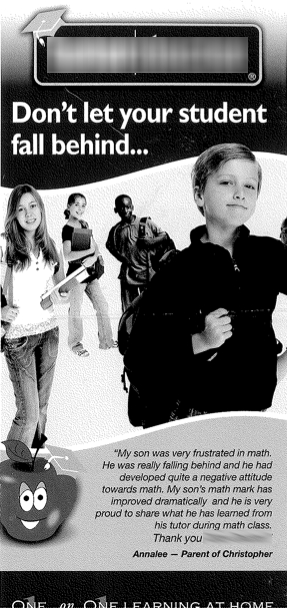A couple of weeks ago, the New York Times ran an article by Kate Zernike on Kumon students in New York. [Thanks to Kenn Cukier for pointing me in the direction of the article.]
The main thrust of the argument in the article is that perceived competition for educational achievement is being pushed to lower-and-lower grades. For some reasons, three-year-olds memorizing numbers is always a favourite topic for journalists as this is meant to be shocking. Without endorsing Kumon worksheets as the path to enlightenment, I do think that some children get a lot of joy and some benefits out of such tutoring and the puzzle-aspects of these kinds of worksheets.
The broader point in the article is, however, that it is imagined/perceived competition and peer pressure that is driving the push of tutoring companies (Kumon and Sylvan are explicitly mentioned) into offer pre-school classes.
The article quotes a prominent Cal psychologist, Alison Gopnik, with a great analogy to the “escalation of supplemental education”: “Irish elk competing to see which had the biggest antlers. ‘The result is that they go around tottering, unable to walk, under the enormous weight of these antlers they’ve developed,'” (Kate Zernike, New York Times, May 15, 2011, ST1, “Fast-Tracking to Kindergarten?”).
Indicators of the “escalation of supplemental education” mentioned in the article include Kumon’s 250,000 students in the U.S. and describes Kumon in New York as “colonizing storefronts like so many Starbucks”.
Costs mentioned here at US$200-300 for preschoolers which is higher than what most Kumon parents would be paying in Japan, I think.
The article refers several times to the tension between ‘progressive’ preschools and the kind of tutoring that is offered by Kumon and the like. Parents seem to be caught in the middle between idealized progressive education and the perceived reality of competition in education that seems so powerful in NY city in particular.
Interesting that the article also describes economic/managerial pressures on Kumon that seem quite similar to the Japanese metropolitan context:
“Most Kumon centers are franchises. But recognizing the prohibitive costs of rent in New York City, the parent company began opening centers itself in New York City a little over three years ago. It now has 36 in the five boroughs — 13 in Manhattan — with 14 more expected to open this year.“
The article does reinforce the sense that supplementary education is limited to the island of Manhattan in the United States. This is, of course, far from the truth. Instead, extreme situations (preschools prepping for tests) always seem to be of greater interest to journalists, whether that is in the U.S. or in Japan.
There are two versions of supplementary education that are subject to current and past research: a) SAT prep, and b) the tutoring services authorized under the “No Child Left Behind” Act.
For the former, see a recent article by Claudia Buchmann and her collaborators, for example:
Claudia Buchmann, Dennis Condron, and Vincent Roscigno. 2010. “Shadow Education, American Style: Test Preparation, the SAT and College Enrollment“. Social Forces, 89 (2): 435-461.



